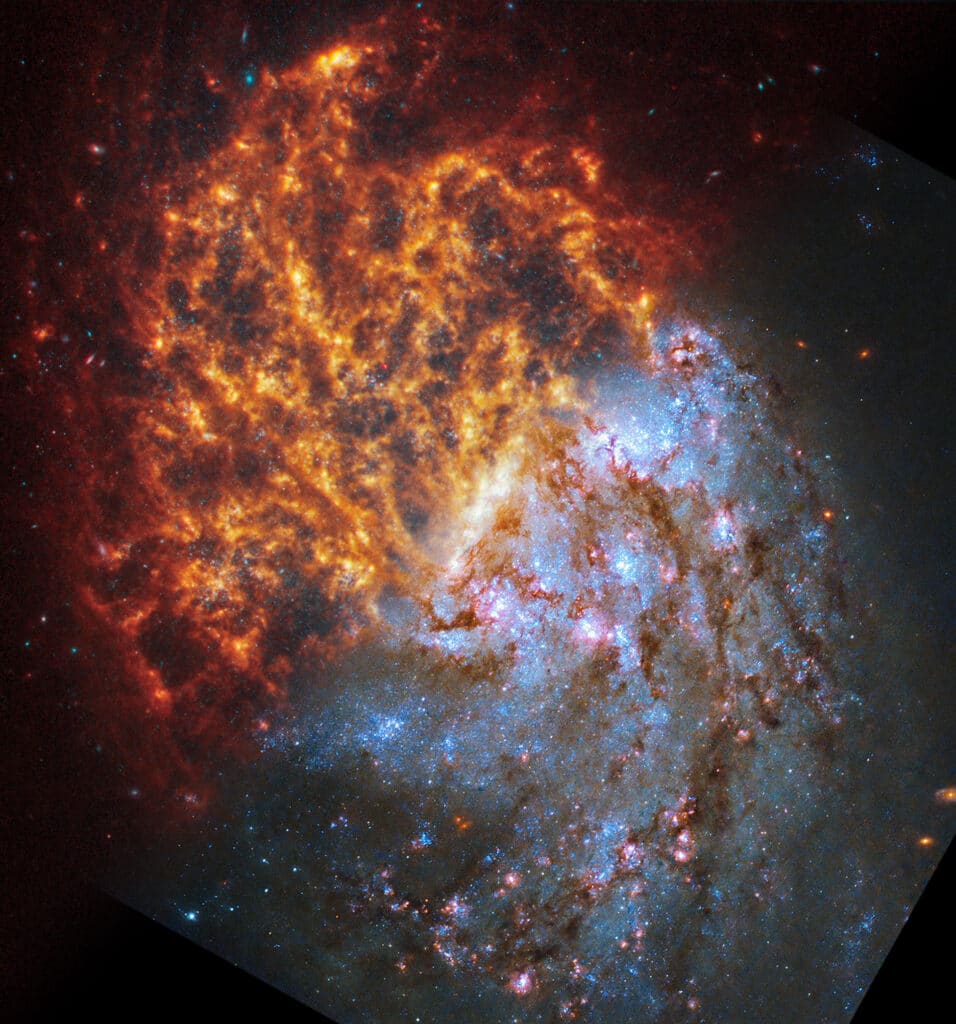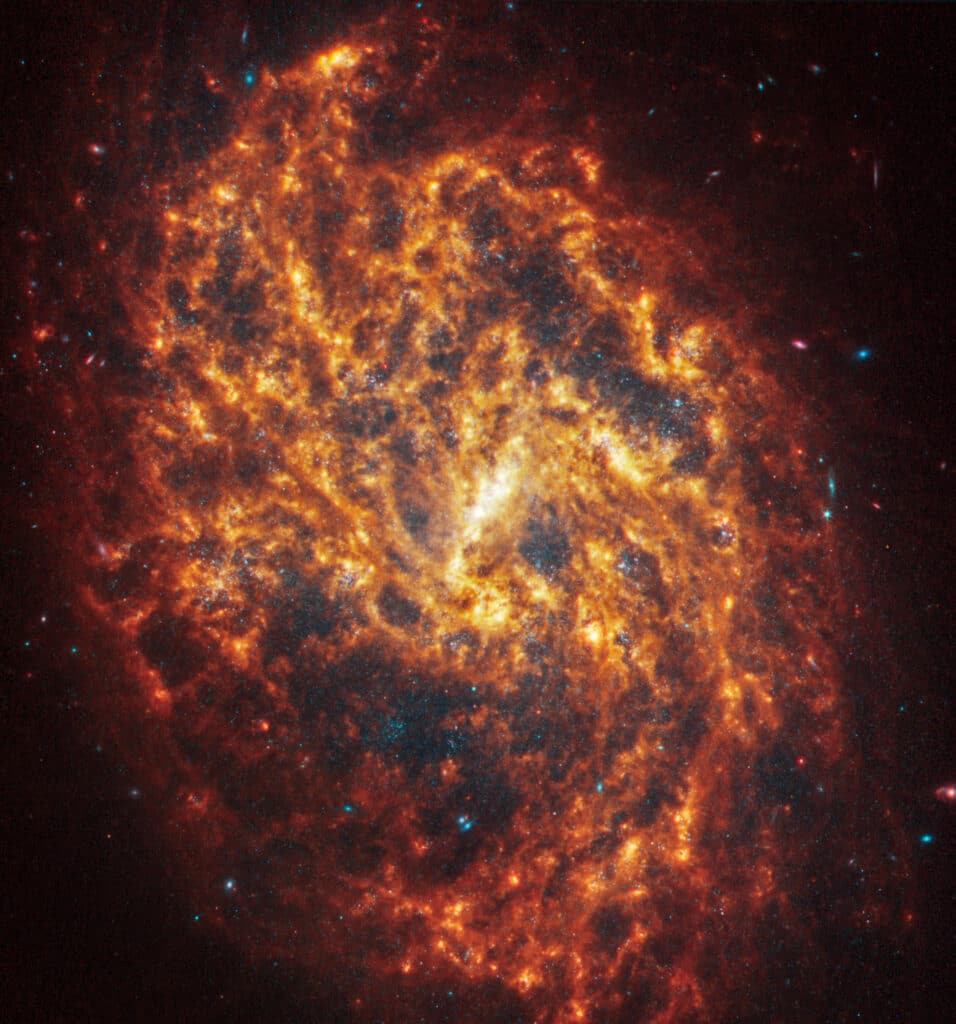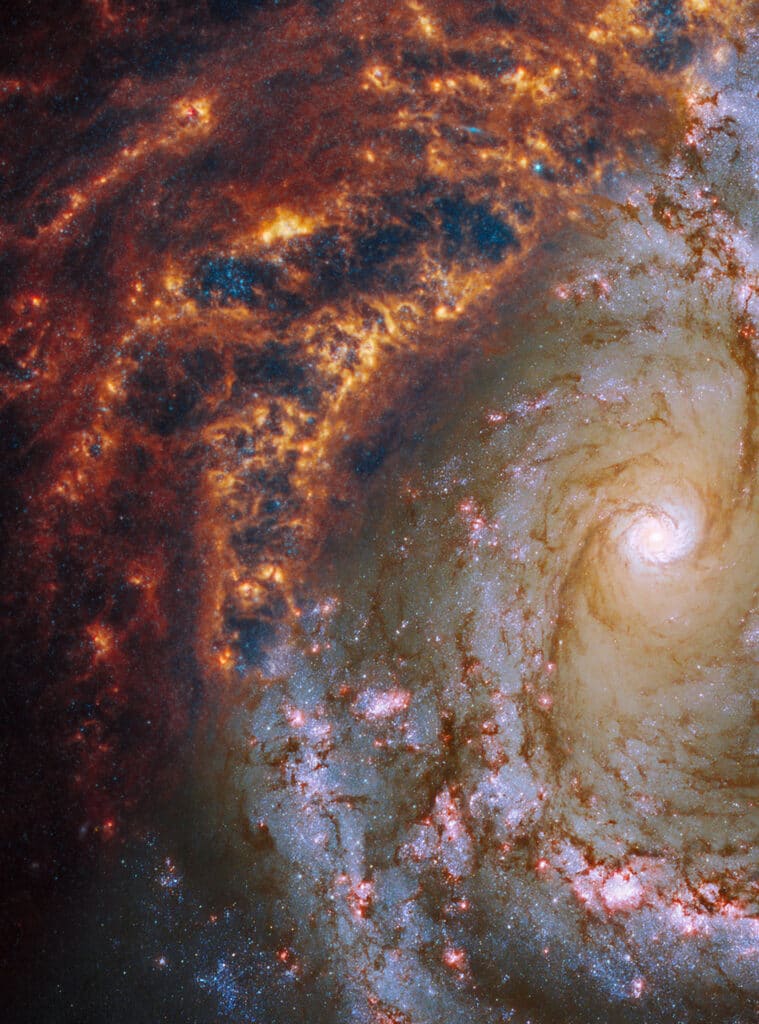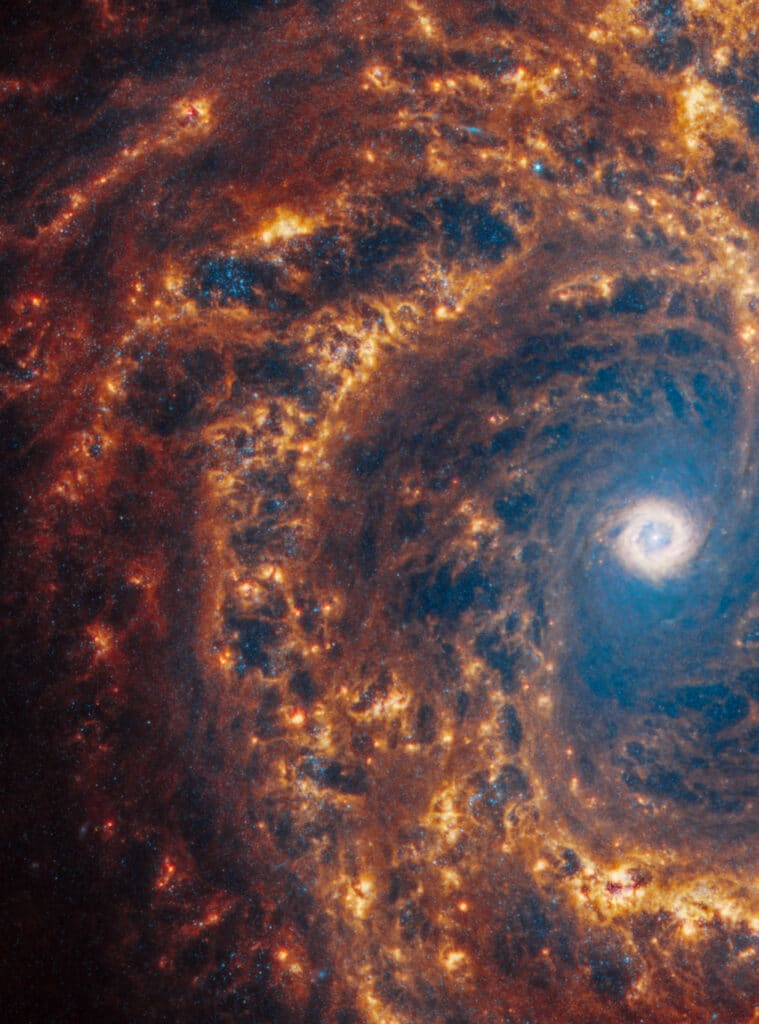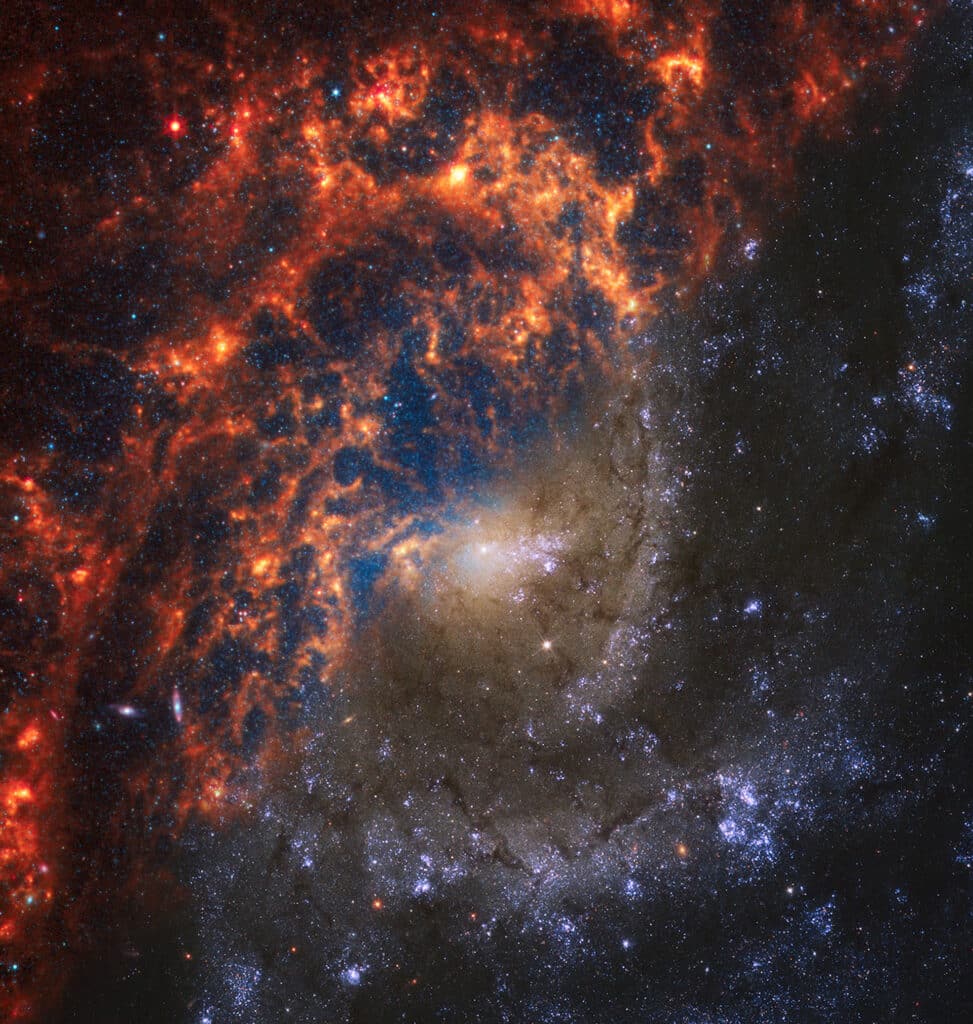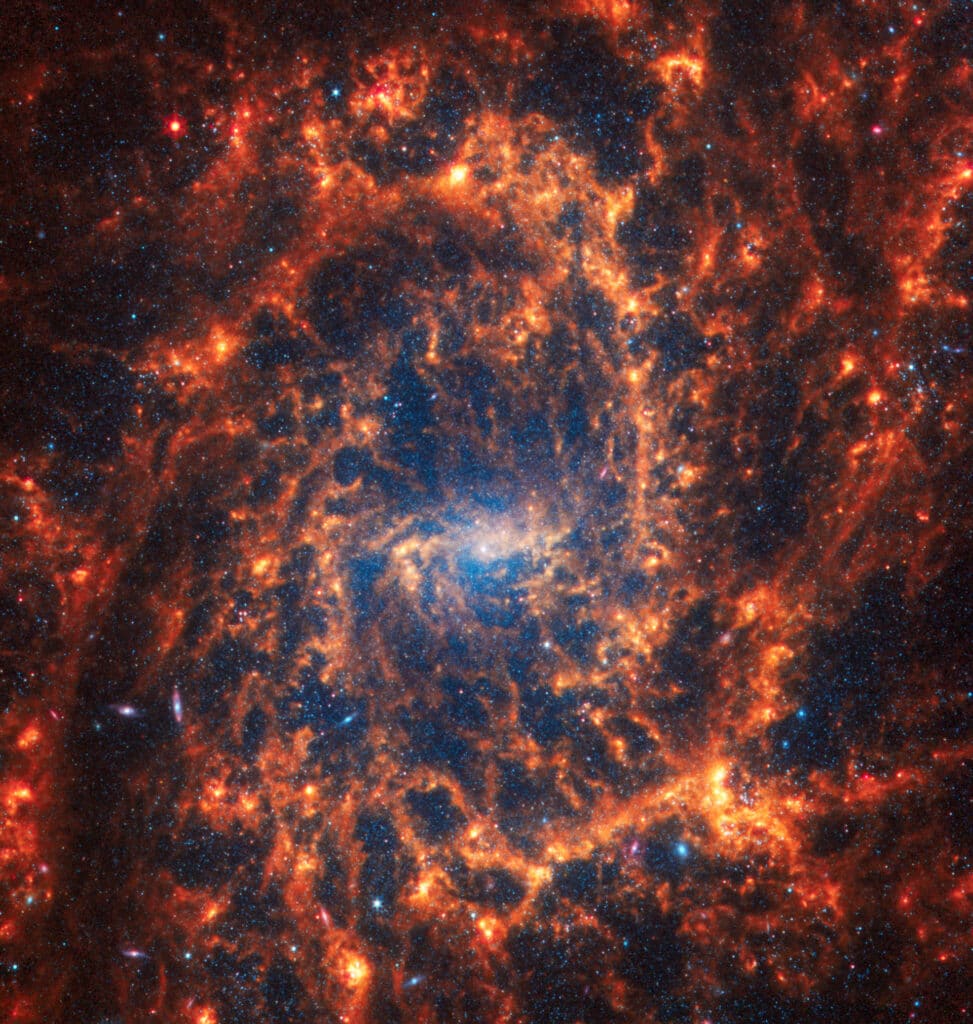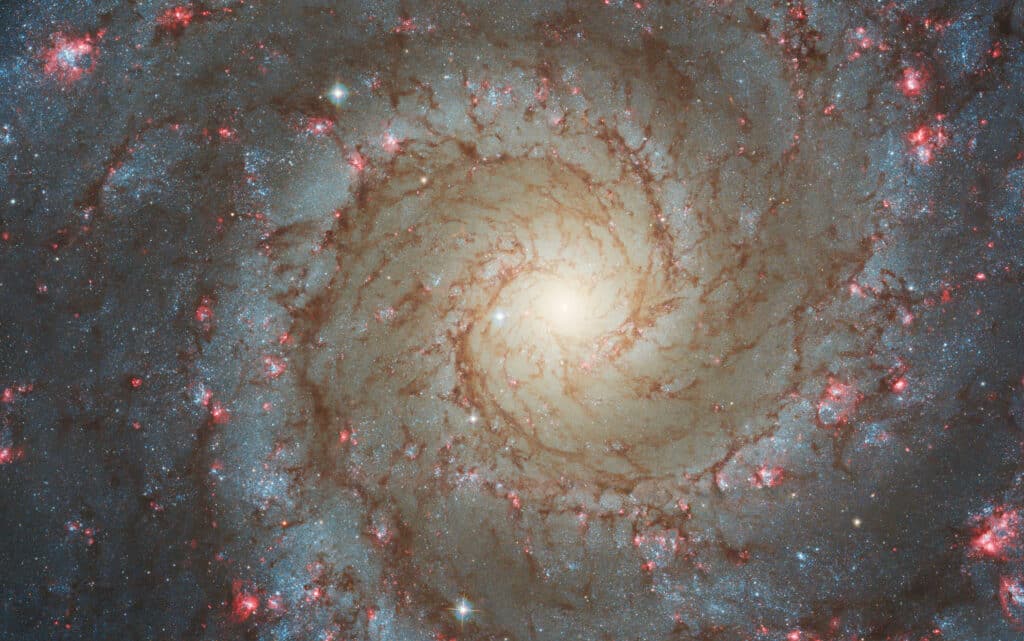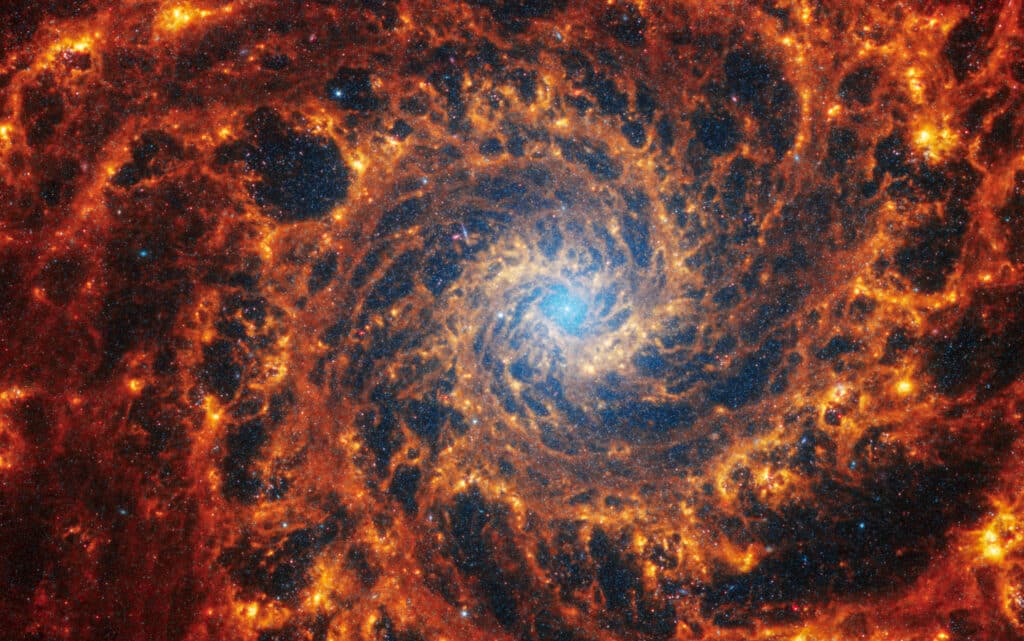Who isn’t fascinated by space and its mysteries? Who hasn’t, one day, wondered what lies up there, far from man’s gaze? In this photographic series, produced by the American James Webb telescope, NASA has concentrated on spiral galaxies. As in the Milky Way – our own galaxy – young stars cluster together in the arms of the galaxy, while older stars gather in the centre.
The images unveiled are part of the PHANGS (Physics at High Angular resolution in Nearby Galaxies) programme. “The new Webb images are extraordinary,” said Janice Lee, scientist in charge of strategic initiatives at the Space Telescope Science Institute in Baltimore. “They are breathtaking, even for researchers who have been studying these same galaxies for decades. The bubbles and filaments are resolved down to the smallest scales ever observed, and tell a story about the star formation cycle.”
Excitement quickly spread through the team as Webb’s images poured in. “I feel like our team is constantly overwhelmed – in a good way – by the amount of detail in these images,” added Thomas Williams, a postdoctoral researcher at Oxford University in the UK. For her part, Christine Pulliam, the new director of the Space Telescope Science Institute in Baltimore, in Maryland, is very enthusiastic. ” Its sensitivity to infrared light allows us to peer further into the distant universe than ever before”, she explained in an interview with Blind.
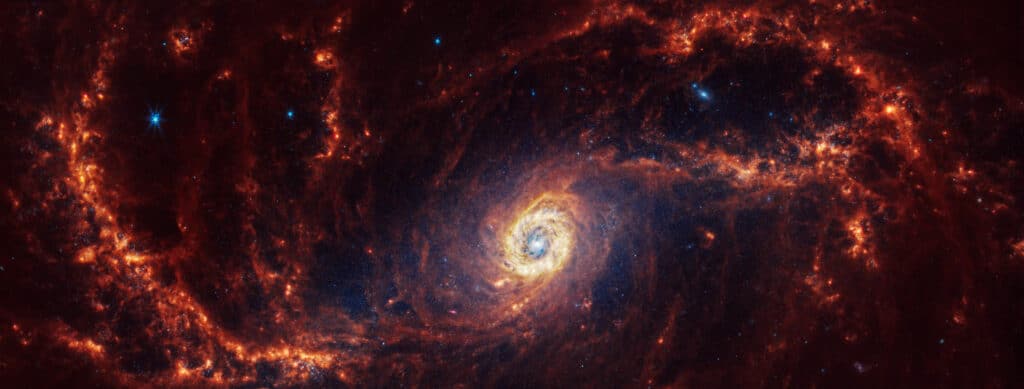
From the center to the arms
Galaxies develop from the inside out. This means that the first stars form near the center. As you move away from the center of the spiral galaxy, towards the ends of its arms, the stars are generally younger – with the exception of the blue zones, where stars older than their neighbours are grouped together. The James Webb telescope, like its predecessor Hubble, is studying how these galaxies work.
Webb’s NIRCam (Near-Infrared Camera) has captured – and continues to collect – millions of stars in these images, which sparkle in blue tones. Some stars are scattered in the spiral arms, while others are grouped together in star clusters. “Hubble continues to give us unprecedented, detailed views into the visible-light universe,” explained Christine Pulliam. “However, Hubble is fundamentally limited by the expansion of the universe. The further away we look, the faster things are moving away from us. The light from these distant objects is redshifted, similar to how a siren’s pitch will lower as an ambulance drives past. At a certain distance, the visible light that we use to study galaxies and other phenomena becomes so redshifted that it enters the infrared part of the electromagnetic spectrum beyond Hubble’s ability to detect it. Webb allows us to continue studying these distant objects with the resolution and detail of Hubble but at redshifts far beyond what Hubble can see.”
Thanks to the data and photographs sent back by the space telescope, scientists have made some progress in their understanding of galaxies. “The infrared studies of nearby galaxies give us new insights into the structure and evolution of these galaxies. Even within our own galaxy, observing at infrared wavelengths allows us to peer through thick dust that normally obscures visible light. Webb gives us the ability to see stars in the process of forming at the cores of dense clouds of gas and dust, which would otherwise be obscured in visible wavelengths.” A godsend, according to the director of the Space Telescope Science Institute in Baltimore.
The cores of galaxies should also be considered, and the presence of pink and red diffraction peaks should be taken into account. “This is a clear sign of the presence of an active supermassive black hole,” explained Eva Schinnerer, a scientist at the Max Planck Institute for Astronomy in Heidelberg, Germany. “Or perhaps the star clusters towards the centre are so bright that they have saturated this area of the image.”
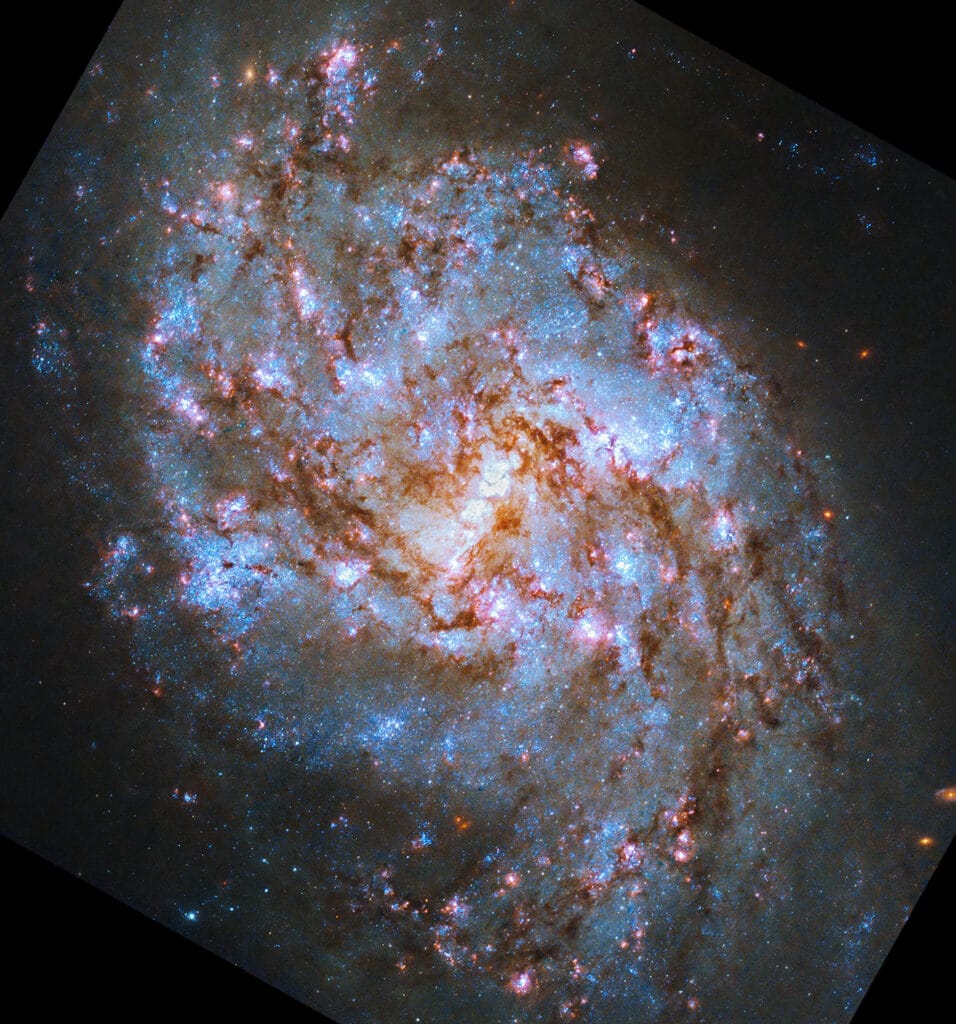
© NASA, ESA, CSA, STScI, Janice Lee (STScI), Thomas Williams (Oxford), and the PHANGS team
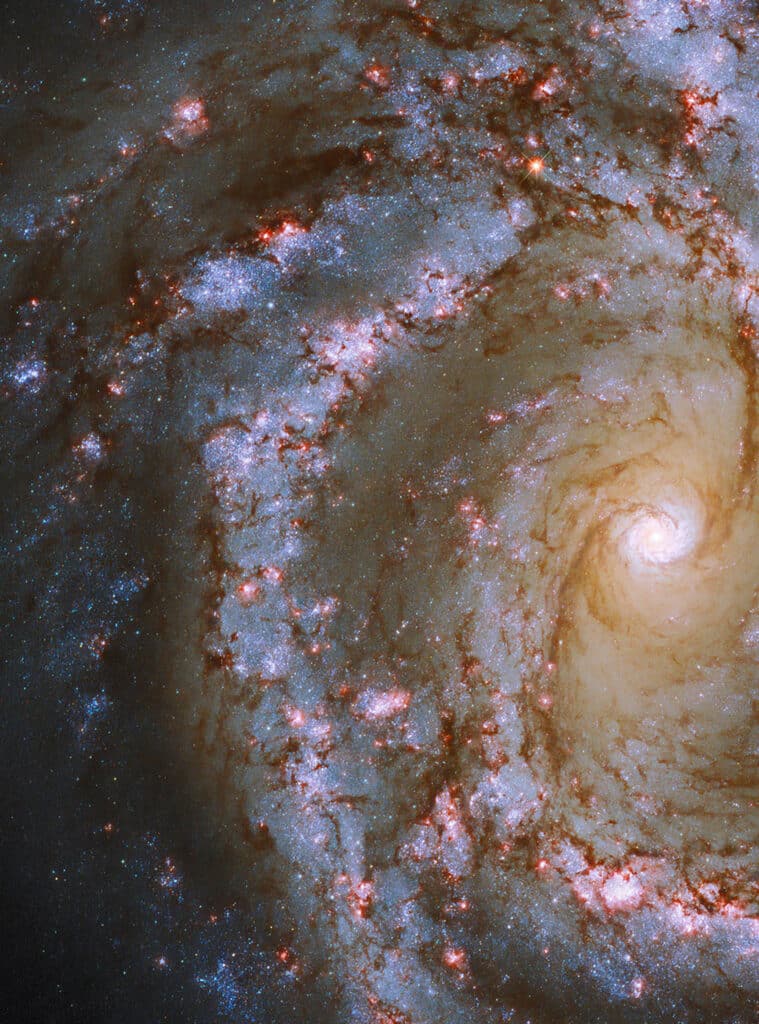
© NASA, ESA, CSA, STScI, Janice Lee (STScI), Thomas Williams (Oxford), and the PHANGS team
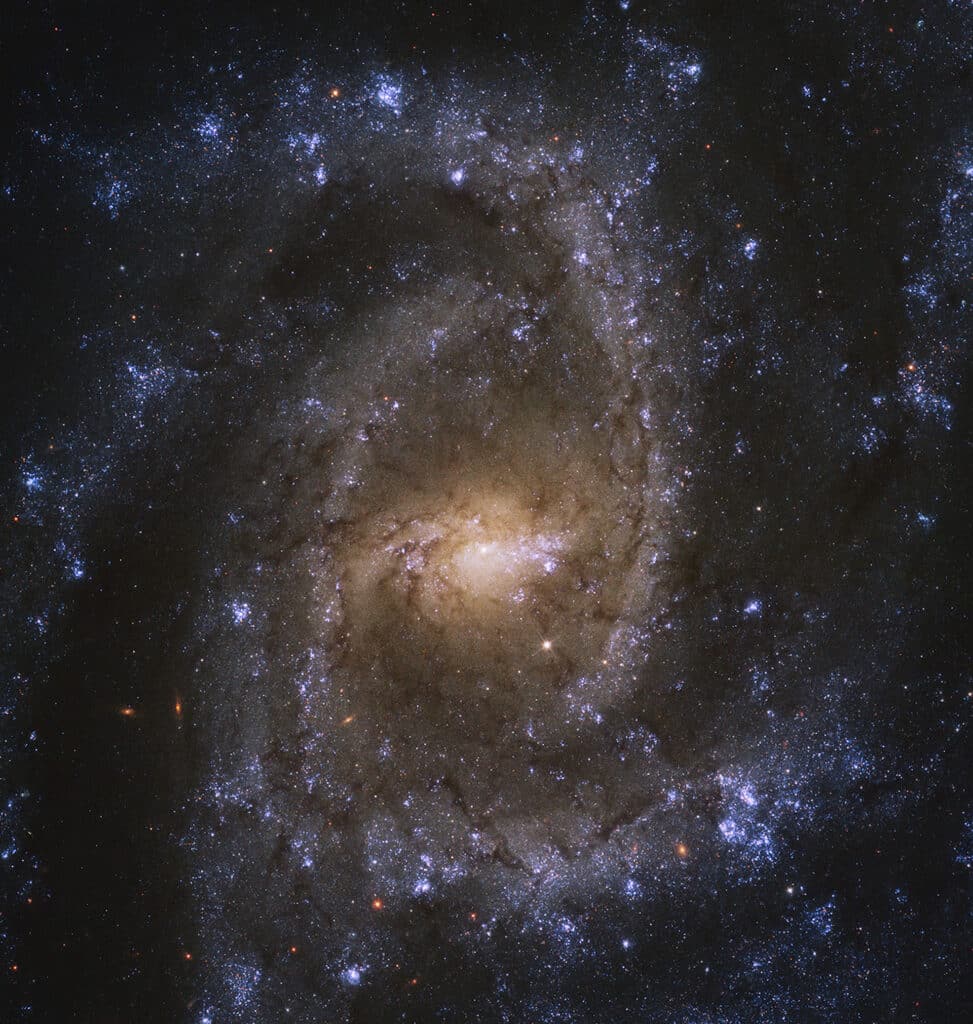
© NASA, ESA, CSA, STScI, Janice Lee (STScI), Thomas Williams (Oxford), and the PHANGS team
To infinity and beyond
“Stars can live for billions of years,” said Adam Leroy, professor of astronomy at Ohio State University in Columbus. The lifespan of a star depends on its size and the quantities of fuel it contains. Stars first consume the hydrogen within them as a source of combustion. Once this energy source is exhausted, the star attacks the helium it contains. The star then collapses in on itself and dies, leading to the appearance of supernovas and black holes, among other things.
With the data from the American James Webb telescope, scientists can begin to explore a wide range of research avenues, thanks in particular to the PHANGS data. The “unprecedented” number of stars resolved by the telescope is an excellent starting point. For Adam Leroy, accurately cataloguing as many stars as possible – it may seem futile to expect to catalogue them all, given the sheer number – could provide a more reliable view and understanding of their life cycles. Christine Pulliam distinguishes between two fields of research: near space and far space.
“The existence of galaxies formed 400 million years after the Big Bang has been demonstrated. Many brighter galaxies have been discovered, in the reds, formed around 600 million years after the Big Bang and beyond.” These discoveries are putting pressure on galaxy formation models, without “calling into question the Big bang”. Research into hypothetical population III stars – extremely massive and luminous, made up exclusively of light elements, and which would be the first stars to form after the Big Bang – is well under way. According to Christine Pulliam, James Webb’s discoveries provide “new information on the history and evolution of star formation in galaxies”.
In addition to disseminating its images, the PHANGS team has also published a catalogue of around 100,000 star clusters. This is the largest to date. “The amount of analysis that can be carried out with these images far exceeds what our team could manage,” emphasised Rosolowsky. “We are delighted to support the community so that all researchers can make their contribution.”
“One of the aims of our work is to inspire the public”, said Christine Pulliam. She sees photography as an important part of this process. “As the saying goes, ‘a picture is worth a thousand words’ and we hope that the breathtaking views of the cosmos we have seen so far with Webb will inspire the next generation of scientists and engineers to seek answers to the big questions about our place in the universe.”

